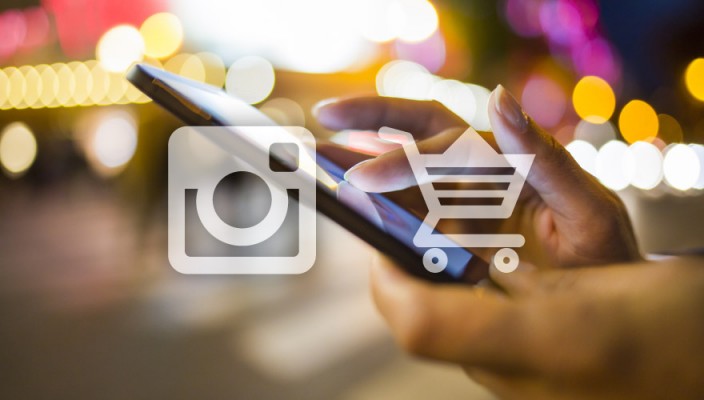What Instagram’s Shopping Update Means For Influencers
Instagram is finally letting users shop what they see in their feeds.
The Facebook-owned platform announced last week that it would be rolling out a feature that lets brands tag products in their posts, linking out to a more detailed product page that leads users out of the app (for the first time, outside of an ad or link in bio) and onto a retailer’s website to purchase. The move has been long-anticipated by brands and Instagram users alike, as the social app drives product inspiration: Internal research shows that 60 percent of Instagram users reported having discovered new products and services on the platform.
For now, the feature is only open to a selection of 20 brands, including Kate Spade, Jack Threads, J. Crew and Warby Parker—but when it rolls out to everyone, it could dismantle the dynamic between brands and influencers that has been established on the platform.
Here’s how Instagram’s network of homegrown stars and user-generated content platforms will be affected by the platform’s push to integrate social shopping within its walls.
Instagram-hack companies will be forced to pivot
The problem with building a company around the gaps of a platform: one new feature rollout can wipe out the need for the third-party business.
“Middleman” shoppable feeds have sprouted up to help bloggers and brands link their Instagram posts to product pages. Companies including Like2Buy, Olapic and LiketoKnowIt have provided some variation of a secondary Instagram feed that lets brands and users add paths to purchase from their product photos on Instagram, by way of the bio’s lone live link.
As it stands, it’s an imperfect system: Users have to head to the brand’s profile to find the link to the shoppable feed, then leave Instagram and scroll through the secondary feed to find the right post, then head to the retailer’s website. Before the new shopping tool, though, it was the best way to herd potential shoppers from Instagram to purchase.
When the feature rolls out to all users, these companies will have to offer something else to brands who will easily be able to tag products in their Instagram posts. Olapic, which powers user-generated content feeds as well as a secondary shoppable feed, plans to focus more on providing analytics and Instagram best practices to clients instead.
“The moment that Instagram offers an in-app tool that’s widely available, it’s going to be superior, and everyone has to adapt to that,” said Luis Sanz, co-founder of Olapic. He went on to say that the platform will discontinue its secondary shop feed when Instagram rolls out the feature to everyone. “This is the first foray into e-commerce for Instagram, so the interesting thing will be what’s next.”
User-generated content will become more valuable
Brands look to user-generated content on Instagram as a way to demonstrate how real customers use their products, and the photo testimonials crop up on product pages, in designated feeds on retailer websites and in brands’ own Instagram feeds through re-posts. With the update, this type of content could become more important as brands want to inspire people to make purchases from the app.
“Customers want to know what type of lifestyle something invokes, as a status symbol,” said Yory Wurmser, retail analyst at eMarketer. “User-generated content is a great way of transmitting that. They’ve got the authenticity that a brand image doesn’t have.”
The power of user-generated content on product pages and retail websites won’t change. Wurmser said that what remains to be seen is whether or not brands will be able to attach product tags to user images they repost in their own feeds. Right now, Instagram is tagging the products in images that brands submit in the testing phase. If that process is eventually handed off to brands, brands could post doubly effective photos to Instagram: user-generated product shots that directly link to buy. In exchange, users will be granted exposure, but it’s up in the air whether or not compensation and commission will be fought for down the line.
Disclosure for paid posts will become crucial
The power that Instagram influencers wield isn’t going to change, but how brands handle their partnerships with these creators will have to.
“The engagement that’s being generated on Instagram is driven by creators, it’s not driven by brands,” said Reed Berglund, CEO of affiliate marketing platform Fullbottle. “They’re still the means to getting action from the audience.”
As affiliate marketing has taken off on social media, the FTC has continued to crack down on the disclosure of these influencers, who can get paid tens of thousands of dollars for a single post. Now that the results of an influencer-brand partnership can account for direct conversion and not just engagement, brands will have to be more careful to monitor that disclosure.
“The real risk lies with the brands,” said Danielle Garno, an attorney practicing fashion law with Miami Litigation Practice. “Now that Instagram is moving towards being a shopping app, it’s more important that the influencers disclose the relationship they have with a brand.
Garno said the go-to disclosures of #ad or #spon can’t be buried in a mess of other hashtags, either.
“They need to be clear and conspicuous. The FTC takes enforcement seriously.”


